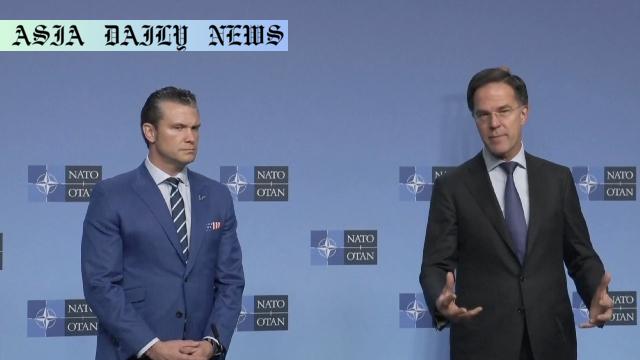NATO Defense Spending – Leaders address increased spending, support for Ukraine.
NATO Defense Spending is a top agenda item for member leaders.
US pushes NATO allies to spend up to 5% of their GDP on defense.
The focus remains on supporting Ukraine amidst ongoing conflict.

NATO Leaders Unite in Brussels
This week, NATO’s defense ministers convened at headquarters in Brussels to discuss critical issues surrounding defense spending and support for Ukraine. The meeting marks a pivotal moment as geopolitical tensions continue to mount globally. The attending delegates were urged to collectively ramp up their military investments to secure a stable future.
Proposed Increase in Defense Budgets
US Defense Secretary Pete Hegseth, in his first NATO meeting, emphasized the need for an unprecedented increase in defense spending from NATO member countries. Calling the existing benchmark of 2% GDP insufficient, he proposed an ambitious target of 5% GDP commitments from NATO allies. This announcement underscores growing concerns over preparedness to counter present and emerging global threats.
US Leadership and the Ukraine Conflict
The United States continues to play a leadership role within NATO, with US President Donald Trump reiterating the importance of fair burden-sharing among allies. As Europe has long relied on America’s defense contributions, Trump has positioned this issue as a top priority for NATO. Simultaneously, efforts to end the Ukraine conflict remain active. Trump’s recent conversations with Russian President Vladimir Putin and Ukrainian President Volodymyr Zelenskyy indicate renewed diplomatic momentum to resolve the crisis.
Economic Implications of Increased Spending
Raising defense spending targets poses significant economic implications for NATO members, many of whom are already managing heavy fiscal responsibilities. NATO Secretary General Mark Rutte acknowledged this, emphasizing the long-term importance of investing to meet future threats. “We have to ramp up defense spending because we know we cannot protect ourselves four or five years from now if we don’t,” he stated, signaling a strategic foresight.
Supporting Ukraine Amidst a Prolonged Struggle
Ukraine, at the center of NATO’s support strategies, continues to face dire challenges due to prolonged conflict. US Treasury Secretary Scott Bessent’s visit to Kyiv underscores America’s dedication to Ukraine’s economic and defense resilience. NATO leaders reaffirmed strong backing for Ukraine, reiterating the alliance’s firm stance against aggression that threatens regional stability.
Looking Ahead
This pivotal meeting has set the stage for transformative action within NATO. As defense spending benchmarks rise, global powers will closely monitor how member countries respond. The alliance’s united focus on enhancing military readiness, coupled with strategic support for Ukraine, displays a resolute stand amidst today’s volatile geopolitical landscape.
Commentary
The Importance of Shared Responsibility
NATO’s call to action for increased defense spending highlights the importance of collective security and shared responsibility. As the world grows more interconnected, no single nation can bear the burden of defense alone. The United States’ push for higher contributions from NATO members reflects an awareness that Europe and Canada must shoulder a fairer share of this burden. This collaborative approach strengthens NATO’s position as a unified and formidable force in safeguarding peace and stability.
Why 5% is a Bold but Necessary Move
Raising the defense spending target to 5% of GDP signals a bold step forward. While it represents a significant economic challenge for some nations, it also underscores the pressing need to prepare for an uncertain future. Emerging technologies and evolving global threats demand proactive investment, which NATO leaders seem to recognize. This decision will ensure that member countries remain agile and equipped to address both present and unforeseen challenges.
Ukraine as a Priority for Global Stability
The ongoing support for Ukraine is a testament to NATO’s dedication to upholding sovereignty and territorial integrity. As the conflict continues to unfold, Ukraine’s success will be emblematic of NATO’s commitment to defending democratic values. Providing both financial and military aid assures Ukraine that it is not standing alone in this challenging time. It also sends a strong message to aggressors worldwide that NATO’s allied nations will not tolerate incursions on their neighbors.
Looking Toward NATO’s Future
NATO’s decisions at this meeting will have far-reaching consequences. As defense budgets grow and member states unite under a vision of shared security, NATO is better poised to address challenges that may arise in the years to come. This proactive approach is essential in maintaining global stability and ensuring that the alliance remains a beacon of strength on the world stage.


